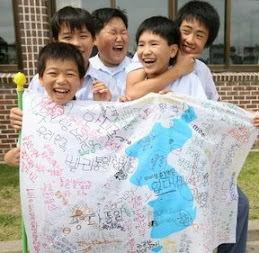 South Korea is likened as "dynamic" as changes and developments come rapidly, propelling it from a poor, agarian country to the highly-industrialized nation that boasts 13th largest economy in the world. Remarkable developments came with price though: labor strife, widening income gap, unbalanced regional development, etc. Here are some identified key trends in South Korea and observations on these trends from a recent trip to Korea.
South Korea is likened as "dynamic" as changes and developments come rapidly, propelling it from a poor, agarian country to the highly-industrialized nation that boasts 13th largest economy in the world. Remarkable developments came with price though: labor strife, widening income gap, unbalanced regional development, etc. Here are some identified key trends in South Korea and observations on these trends from a recent trip to Korea.Urban Development
High-rise apartments are constantly rising throughout the country (with new, taller apartment complexes replacing older apartment units), satisfying increasing housing demands but are adding to congestion and problems related to re-developments (speculations, unwanted evictions, etc.).
Infrastructure
Roads and bridges are well built and maintained, but “bridge to nowhere” projects (due to ambitious local procurements) exist. Some newly-built regional airports are said to be operating well below capacity.
Income Gap
The gap between haves and have-nots is ostentatiously visible and felt -- in apartment sizes, neighborhoods, cars, attire, etc.
Consumerism
Koreans are said to be reversing the trend and are saving less and spending more. This is visible as consumer marketing, brand name products, expensive imported cars abound.
Weak economy?
Economy seems to be doing OK judging from all the folks eating out en masse (though eating out in Korea is relatively cheaper than in Western countries). Restaurants and convenience stores are never few steps away in any part of Korea.
High Tech
Subway is equipped with latest digital displays, stations are automated, with passengers watching video on their cell phones. Korea is said to be one of the most wired (with broadband) country, but in the countryside, wi-fi seems to be lacking.
Regionalism
Traveling from Cholla Province to Kyungsang Province, one can see the difference in developmental preferences (Cholla is less developed as the central governments have favored Kyungsang).
Regional initiatives
Regional/local identity is strived through unique cultural festivals, marketing of unique cultural/historical assets and products.
Graying of Korea
Can’t tell this trend on the streets or on public transportation systems, as young folks abound. Older folks must be staying home or going to the mountains for hikes.
Multiethnic society
You can see more foreign residents in the streets (teaching English or working as migrant workers), mingling with the crowd and Koreans not taking much notice. In the countryside, one can see signs of marriage centers that provide information on foreign brides from Vietnam, China, etc.





No comments:
Post a Comment